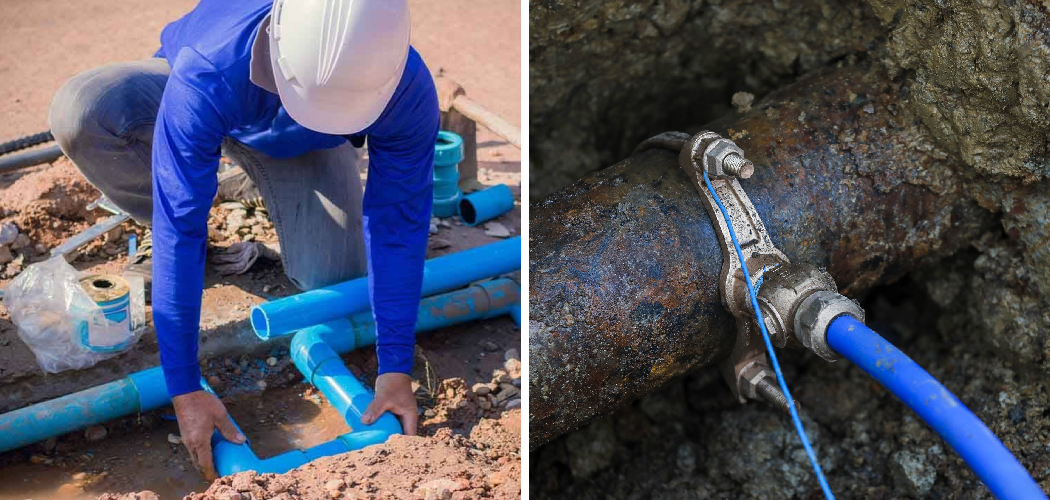Your main water line is responsible for bringing clean and fresh water into your household. However, just like any other plumbing system, it can wear out over time and may need to be replaced. Replacing your main water line can be intimidating, but with the right tools and knowledge, you can do it yourself.
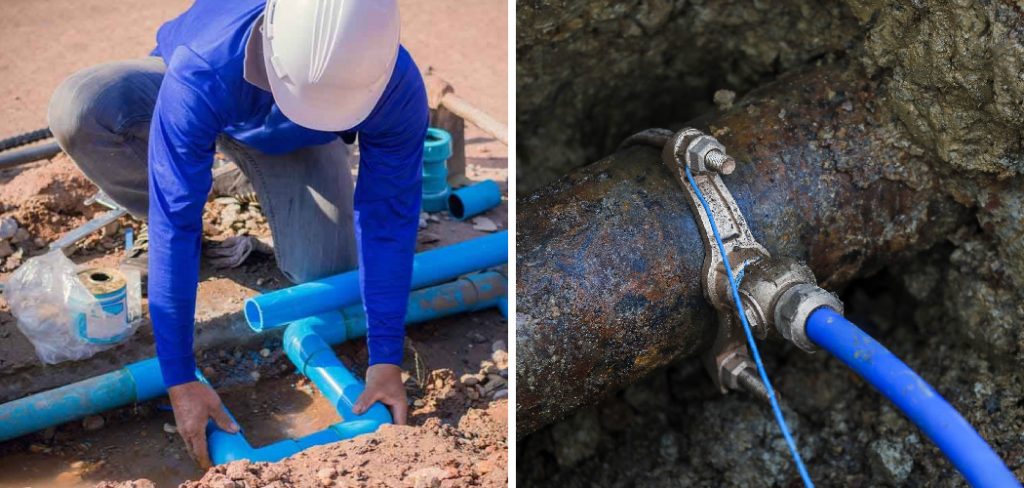
In this blog post, we will guide you through the process of how to replace main water line step-by-step, so you can get your water back up and running smoothly.
Can You Replace the Main Water Line?
The main water line is the backbone of your home’s plumbing system, responsible for bringing fresh water into your home. Unfortunately, like any other pipe, it’s prone to wear and tear over time, leading to leaks and breaks. While repairing a small section of the line may be possible, in many cases, it’s more cost-effective and practical to replace the entire length instead.
However, replacing the main water line is no small feat and should only be handled by a licensed plumber. With the right tools and expertise, your plumber can replace your old line with a newer, more durable material, ensuring your home has a steady supply of clean water for years to come.
Why Should You Replace the Main Water Line?
As a homeowner, there are certain upgrades and repairs that are necessary to maintain the functionality and safety of your property. One of the most important replacements you may need to consider is replacing your main water line. This isn’t something you should take lightly, but it is something that could save you a lot of headaches and expenses down the line.
Your main water line is responsible for bringing clean water into your home, and over time, wear and tear, damage, and deterioration can all cause problems that could lead to costly water damage, health hazards, and serious plumbing issues.
If you’re noticing problems with your water pressure, discoloration, or persistent leaks, it might be time to consider a main water line replacement to ensure the continued health and safety of your family and property.
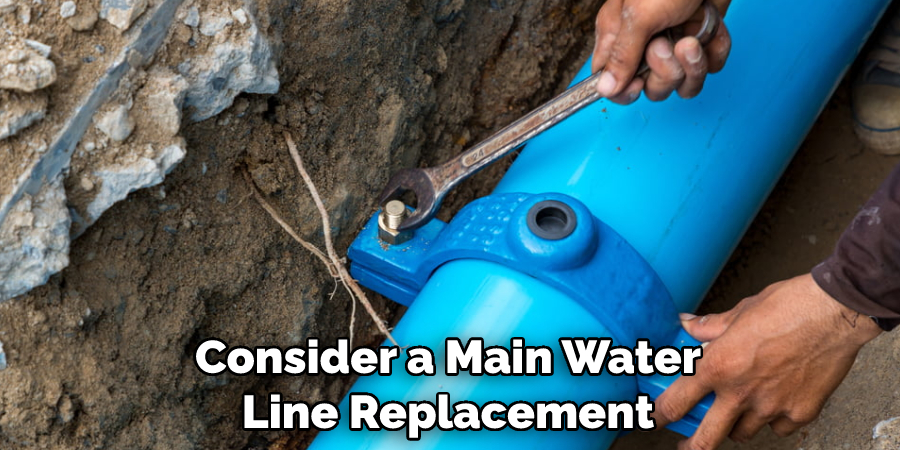
How to Replace Main Water Line – in 7 Easy Steps
Step 1: Turn off the Water Supply
Before replacing your main water line, you have to turn off the water supply to your home first. Locate your water meter, which should be near the street or sidewalk, and turn off the shut-off valve. Once the valve is turned off, turn on your faucet to release the remaining water in the pipes.
Step 2: Dig Up the Main Water Line
Using a shovel, carefully dig around the area where your main water line is located. Make sure to dig deep enough to access the water line. Once you have exposed the water line, remove any debris around the area.
Step 3: Remove the Old Water Line
Cut the old water line on both ends using a hacksaw or pipe cutter. Remember to wear gloves and eye protection when doing this to avoid any harm. After cutting the old water line, remove it from the ground and dispose of it properly.
Step 4: Install the New Water Line
Install the new water line by placing it in the trench you previously dug. Connect the pipe to your home and the water main using couplings that should be included with the new water line. Secure all connections with a wrench to ensure they are tight and leak-free.
Step 5: Test the New Water Line
Once you have installed the new water line, you must test it for leaks. Turn on the shut-off valve and let the water run for at least 30 minutes. During this process, check for any leaks or unusual noises coming from the pipes. Turn off the water and cover the trench with soil if everything looks good.
Step 6: Clean Up the Area
Once you are done, clean up the area by raking the dirt around the water line. If there is any excess soil, dispose of it properly and replace it with fresh topsoil.
Step 7: Turn on the Water Supply
Finally, turn on the shut-off valve and your home’s water supply. After the initial few minutes of low pressure, the water should return to its normal flow. Test all faucets throughout your home to make sure they are working properly.
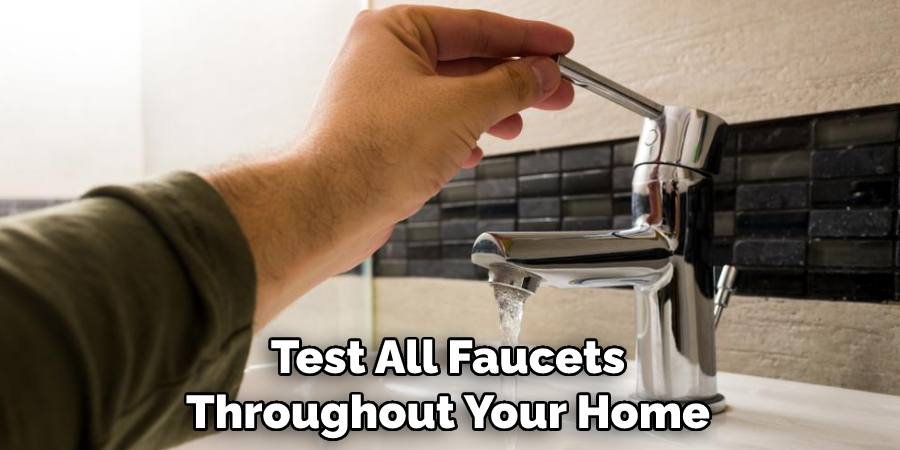
That’s it! You’ve now learned how to replace main water line. It is a simple process, but it’s important to follow these steps carefully in order to ensure that everything goes smoothly and you don’t end up with any leaks or other issues. With the right tools and some patience, replacing your main water line will be a breeze!
5 Considerations Things When You Need to Replace Main Water Line
1. Cost
The cost of replacing a main water line can vary depending on a number of factors, including the length of the line, the type of pipe used, and the location of the line. Homeowners should get multiple estimates from qualified contractors before making a decision.
2. Disruption
Another consideration when replacing a main water line is the potential disruption to your home and property. The contractor will need to dig a trench in order to access the water line, which can damage your landscaping. Additionally, you may be without water for a period of time while the work is being done.
3. Materials
When choosing materials for your new water line, you will need to decide between plastic and metal pipes. Plastic pipes are typically less expensive than metal pipes, but they are also more susceptible to damage from freezing temperatures. Metal pipes are more durable but may be more expensive.
4. Warranties
It is important to ask about warranties when replacing a main water line. Some contractors may offer a warranty on the workmanship, while others may offer a warranty on the materials used. Make sure you understand what is covered under any warranty before making a final decision.
5. Permits
Depending on your municipality, you may need to obtain a permit before replacing your main water line. Be sure to check with your local building department to see if a permit is required and if there are any other requirements that need to be met.

Replacing a main water line can be a complex and expensive project, so it’s important to do your research and consider all the factors before making a decision. Make sure you get multiple estimates from qualified contractors and understand any warranties or permits that may be required.
Doing so will help ensure that your new water line is installed correctly and with minimal disruption to your home.
Benefits of Replace Main Water Line
Replacing your home’s main water line can seem daunting and costly, but the benefits far outweigh the initial investment. One major benefit of replacing your main water line is improved water pressure throughout your home. A new, efficient water line can provide a steady and consistent flow of water, ensuring that your showers are more enjoyable and your appliances function properly.
Another benefit is reduced risk of leaks or bursts. Over time, the old pipes can weaken and rust, leading to leaks or even complete bursts. A new main water line eliminates this risk and provides peace of mind knowing that your home is protected from potential water damage.
Overall, replacing your main water line can save you money in the long run and improve the overall functionality and safety of your home’s plumbing system.
4 Common Mistakes People Make When Trying to Replace Main Water Line
1. Not Shutting Off the Water Supply
One of the most common mistakes people make when replacing a main water line is forgetting to shut off the water supply. If you don’t shut off the water before starting to work, you could end up with a flood in your home. Make sure to locate your home’s water shut-off valve and turn it off before beginning any work on the water line.

2. Not Digging a Trench Wide Enough
Another mistake people make is not digging the trench wide enough. The trench needs to be wide enough to accommodate the new water line as well as any other pipes or cables that may be in the way. If you don’t dig the trench wide enough, you could end up damaging other pipes or cables when you’re trying to install the new water line.
3. Not Checking for Gas or Electric Lines
Before you start digging, you need to make sure that there are no gas or electric lines in the way. If you hit a gas line, it could cause an explosion. And if you hit an electric line, it could electrocute you. To avoid these hazards, always call your local utility company before starting any work on a main water line replacement.
4. Not Installing a Backflow Preventer
If you’re replacing an old main water line, chances are it doesn’t have a backflow preventer installed. A backflow preventer is a device that prevents contaminated water from flowing back into your home’s clean water supply. This is especially important if you live in an area where there is a risk of flooding or contamination.
Do I Need Special Permits or Licenses to Replace My Own Mainline Pipe System at Home?
Replacing the mainline pipe system in your home may seem like a daunting task, but it’s important to ensure the safety and efficiency of your plumbing system. Before you begin this project, you may wonder if you need special permits or licenses to complete the job. The answer depends on where you live and the extent of the work that needs to be done.
In some areas, permits may be necessary to ensure compliance with local building codes and safety regulations. Be sure to check with your local government or plumbing authority before beginning any major plumbing projects in your home.
With the proper permits and licenses, you can feel confident tackling your mainline pipe system replacement and enjoy safe, efficient plumbing for years.
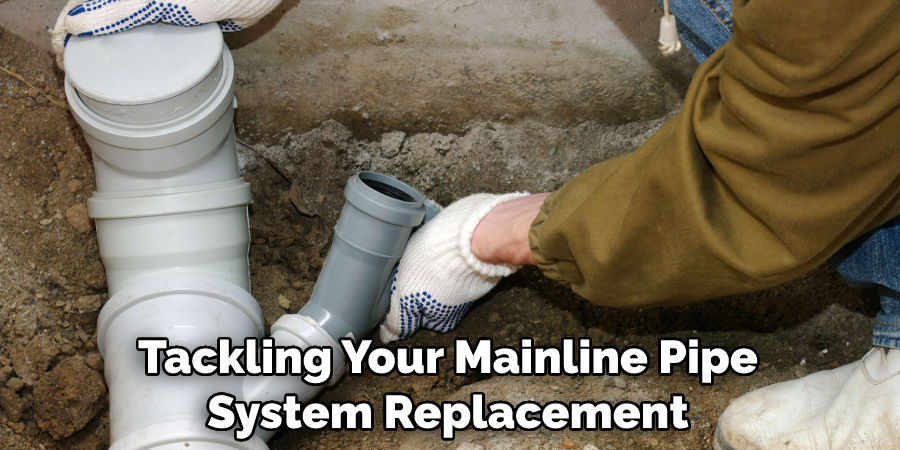
Conclusion
Replacing your main water line can be a challenging and complicated process. However, with the right tools, time, and effort, you can do it yourself and save money on hiring a professional. Remember always to follow the safety guidelines and take your time to ensure everything is done correctly.
A new water line will improve your water quality and supply, so take the time to do it right and enjoy the results. Thanks for reading our post about how to replace main water line.

